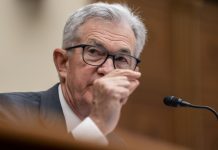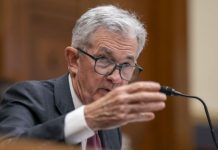
June 14 (UPI) — The Federal Reserve raised its benchmark interest rate by one quarter percentage point — to a range of 1 percent to 1.25 percent — signaling strength in the U.S. economy.
The Fed has raised the rate for three consecutive quarters since 2015, for a total growth of 1 percentage point. The highest rate ever was 20 points in 1979 and 1980.
The federal funds rate is what depository institutions, including banks and credit unions, maintain at the Federal Reserve to lend to other institutions overnight. The rate determines the level of other interest rates in the U.S. economy, and the higher the federal funds rate, the more expensive it is to borrow money.
Eight Federal Reserve committee members, including Fed Chair Janet Yellen, approved the change, but Neel Kashkari preferred to keep the existing target rate. The committee includes the seven-member Federal Reserve Board of Governors, which has three vacancies, as well as the president of the Federal Reserve Bank of New York and four Reserve Bank presidents from different regions in the United States.
Since the 2008 financial crisis, the Federal Reserve has lowered the interest rate to encourage borrowing and risk-taking.
“Information received since the Federal Open Market Committee met in May indicates that the labor market has continued to strengthen and that economic activity has been rising moderately so far this year, the Fed said in a statement Wednesday. “‘Job gains have moderated but have been solid, on average, since the beginning of the year, and the unemployment rate has declined. Household spending has picked up in recent months, and business fixed investment has continued to expand.”
In May, the unemployment rate dropped to 4.3 percent, the lowest level since 2001. It reached 10 percent in October 2009.
The American economy has added an average of 190,000 jobs each month over the past two years.
The Fed also noted inflation is “running somewhat below 2 percent” and “longer-term inflation expectations are little changed, on balance.”
By the end of the year, the Fed projects its benchmark rate will be at a neutral level, neither stimulating nor hindering economic growth.
“The committee will carefully monitor actual and expected inflation developments relative to its symmetric inflation goal,” the Fed said. “The committee expects that economic conditions will evolve in a manner that will warrant gradual increases in the federal funds rate; the federal funds rate is likely to remain, for some time, below levels that are expected to prevail in the longer run. However, the actual path of the federal funds rate will depend on the economic outlook as informed by incoming data.”






